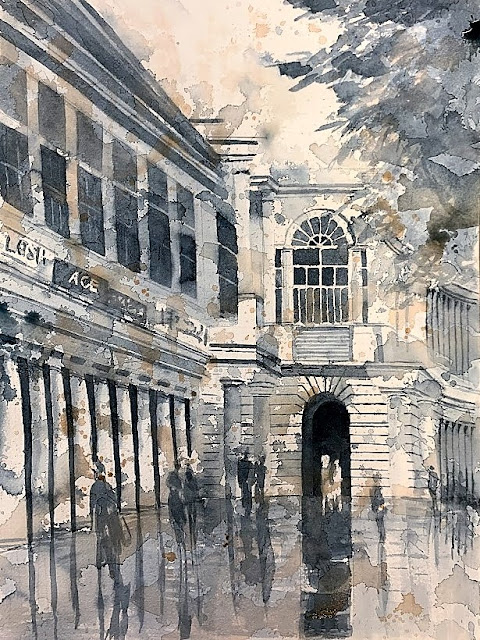Some new discoveries
Inspired by Patti Mollica's color schemes for the same scene, I decided to do the same. I had some major learnings along the way, and feel like I got a new lease on painting and experimenting. I felt like I was on a plateau for a while, doing the same things, not brave enough to just experiment and play, yet never quite pleased with anything I painted. And not inspired to paint, and feeling discouraged when I did. A vicious cycle. This exercise was the best thing to happen to me and I learned a lot.
My major take-aways:
- find a practice exercise that another artist has done and just do that. It's just an exercise, not a full painting, and it will encourage you to keep your brushes wet, paint, and maybe you will learn something new, as I did.
- find an ordinary reference image. I am always searching for the perfect inspiration and guess what? I am setting myself up for failure. If the inspiration is perfect, the painting can seldom be. It is too much pressure. Find an ordinary, everyday image - it should be easy to beat that in a painting, right? Not only trying to beat it, but make it better and make it special.
- do a value study - do many until you are pleased. I love working in Payne's Grey and not worrying about color. I feel I like my black-and-white paintings a lot more - there is no pressure, you can't go wrong putting the wrong color next to another color inharmoniously. It is just about values.
- find a path of white through the painting. I find the paintings I'm most drawn to have white in them - nothing else provides that level of contrast. And, in keeping the whites, you are negatively painting - another striking technique that brings a level of complexity that positive painting simply cannot.
- do many color schemes - analogous, split complementary, triadic - and you will find your own preferences for color and color schemes. And you will end up with little postcard-sized paintings that seem effortless because they are "just studies."
In that experimentation, you will learn, but most importantly, you will improve your motor skills, your brain-eye-hand coordination and muscle memory as you paint the same scene over and over. And I haven't even gotten to the best part.
The best part is...
....in that doing of the multiple studies, at some point, you will stop looking at the reference image. That is the best thing to happen, as you will look and evaluate your painting FOR WHAT IT IS, rather than its likeness to the reference image. Only multiple studies can get you there....you will find yourself adding this, moving that, for the sake of YOUR painting - and the reference image has been used up and set aside somewhere along the way.
Here is what I did.
The final painting is first. It wasn't even meant to be a final painting. I was excited to do this because I found a scheme I liked (analogous), found a value study I liked, but needed all those stepping stones along the way to get to it. There's no bypassing that. There is tremendous learning in all of that and it ALL NEEDS TO HAPPEN to get to the end.






Comments
Post a Comment